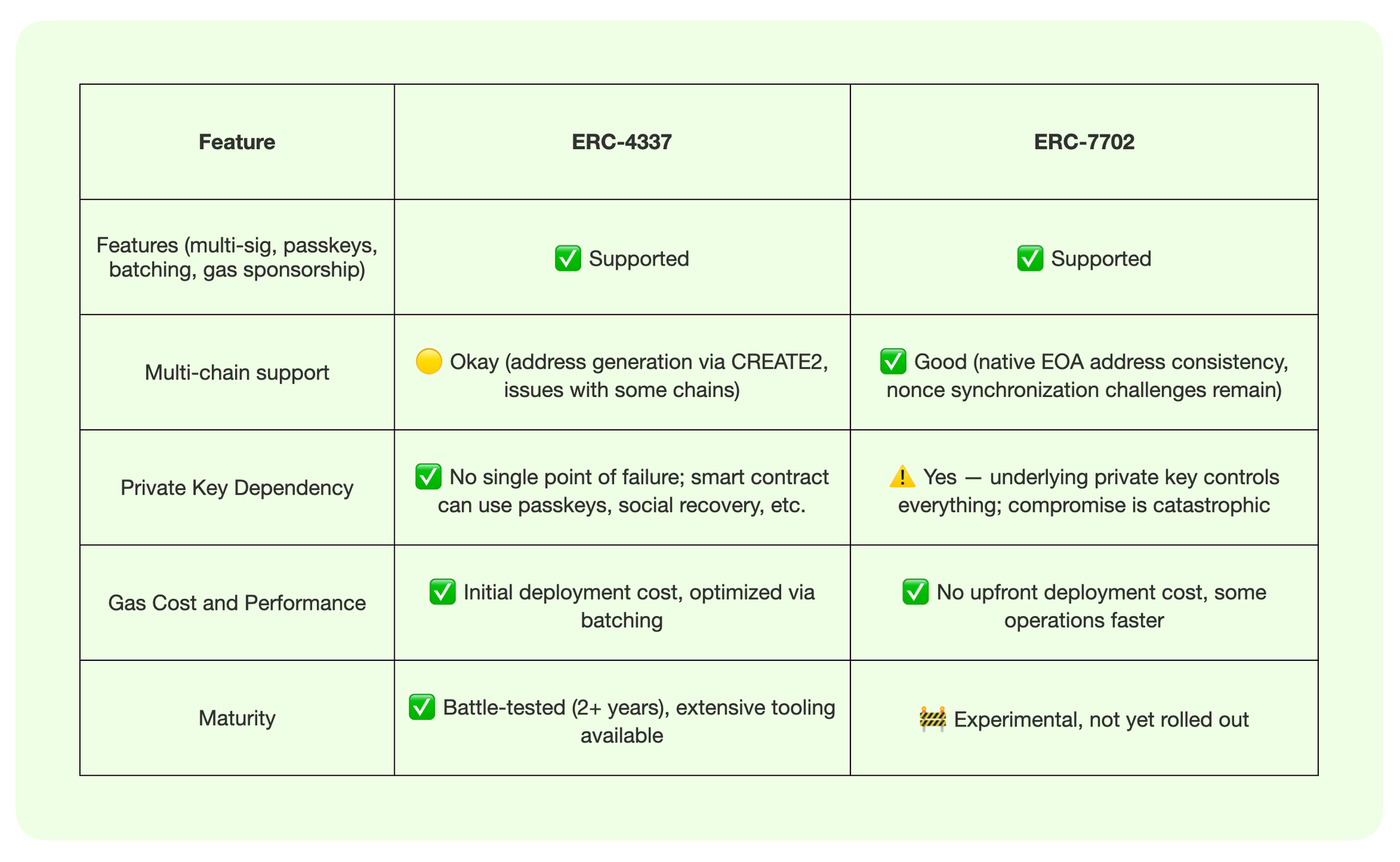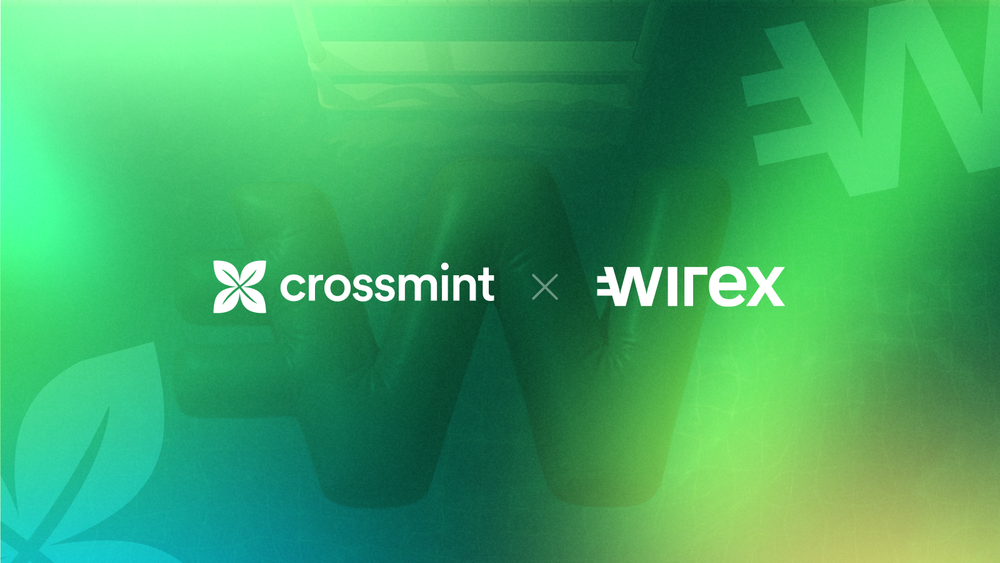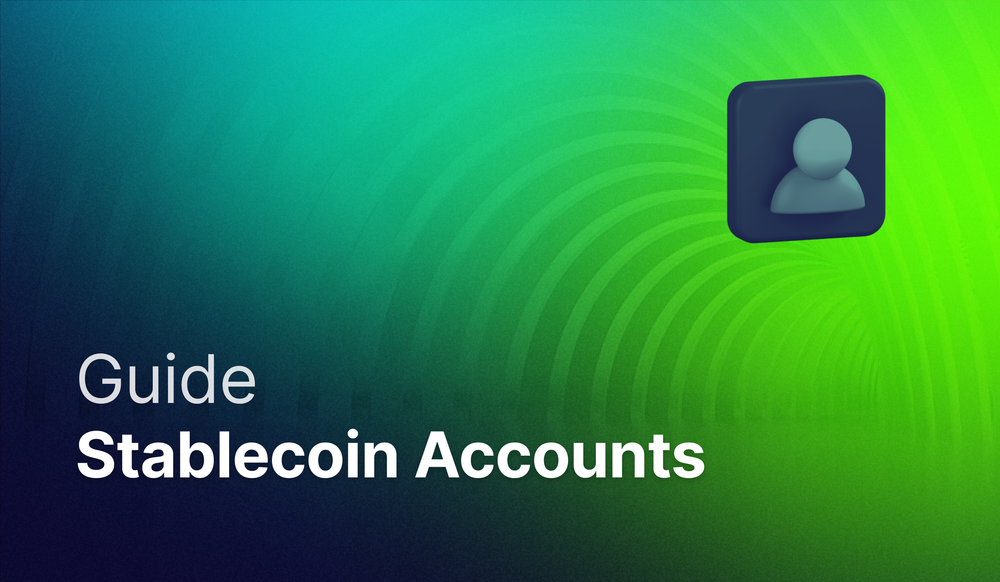Selecting the right embedded wallet solution begins with understanding its foundational standard. These underlying protocols determine the capabilities and limitations of wallets within your app. Currently, two leading Ethereum standards—ERC-4337 and the upcoming ERC-7702—offer developers distinctly different approaches to building next-generation embedded wallets.
This article delves into the nuanced differences between these standards, with a critical focus on their security models.
Introducing the Standards: ERC-4337 vs ERC-7702
ERC-4337 introduces a new wallet model based on smart contracts rather than externally owned accounts (EOAs). These wallets are fully programmable and support advanced features like gas sponsorship, transaction batching, and social recovery by default. They're controlled by logic encoded in a smart contract, rather than a single private key.
ERC-7702, on the other hand, enhances existing EOAs by temporarily delegating execution to smart contracts. This allows standard EOAs to gain smart wallet-like capabilities—such as batching or gas sponsorship—without changing the underlying account. It's a lighter-weight upgrade path that adds functionality incrementally without requiring the user to deploy a new contract wallet.
Key Management: ERC-4337 vs ERC-7702
ERC-4337 wallets don't rely on a single private key. Instead, they are managed by smart contract logic, allowing multiple signers—including non-private key signers such as biometric keys or passkeys. This means a compromised private key won't necessarily lead to catastrophic loss since other signers can safeguard assets.
ERC-7702, however, remains fundamentally tied to a private key (an enhanced EOA). Despite its ability to delegate actions to multiple signers, the underlying private key remains a critical point of vulnerability. Leakage or compromise of this key results in catastrophic asset loss.

Which Standard is Best for Your Application?
Choose ERC-4337 if your app is:
- A fintech handling users' funds where a private key loss would be catastrophic.
- Requiring advanced multi-sig, recovery features, or extensive programmable logic.
- Seeking a mature, extensively tested infrastructure.
Choose ERC-7702 if your app is:
- Experimental, ready to work at the cutting edge of technology.
- A Web3-native app requiring incremental adoption.
- Targeting applications needing consistent EOA addresses across numerous chains, including complex environments like ZKSync.
ERC-4337 remains the gold standard for fintechs or any app managing significant user assets, emphasizing maximum security and feature-rich programmability.
ERC-7702 provides a pragmatic, incremental path for Web3 applications upgrading existing EOAs or requiring flexible multi-chain operations. Selecting the right standard depends heavily on your app’s unique security requirements and cross-chain strategies.
Ready to get started with Embedded Wallets?
If you’re exploring embedded wallets, Crossmint has you covered. Our embedded wallet infrastructure is trusted by leading fintechs, AI agent platforms, and next-generation apps to deliver secure, seamless, and scalable wallet experiences—without the headaches of custom development or vendor lock-in.
With Crossmint, you get:
- Future-proof smart wallet technology supporting both ERC-4337 and the latest standards, so you’re always ahead of the curve.
- Effortless integration: One simple API unlocks advanced features like gas sponsorship, programmable controls, and multi-chain support across 40+ blockchains.
- Enterprise-grade security: Our architecture is designed to minimize risk, with robust key management and programmable recovery options.
- No vendor lock-in: You own your users and your data, with the flexibility to move as your business evolves.
Whether you’re building a fintech app, an AI agent platform, or any product that needs secure, user-friendly wallets, we’re here to help you launch faster and scale with confidence.
Curious how Crossmint embedded wallets can work for your app? Reach out to our team today.







